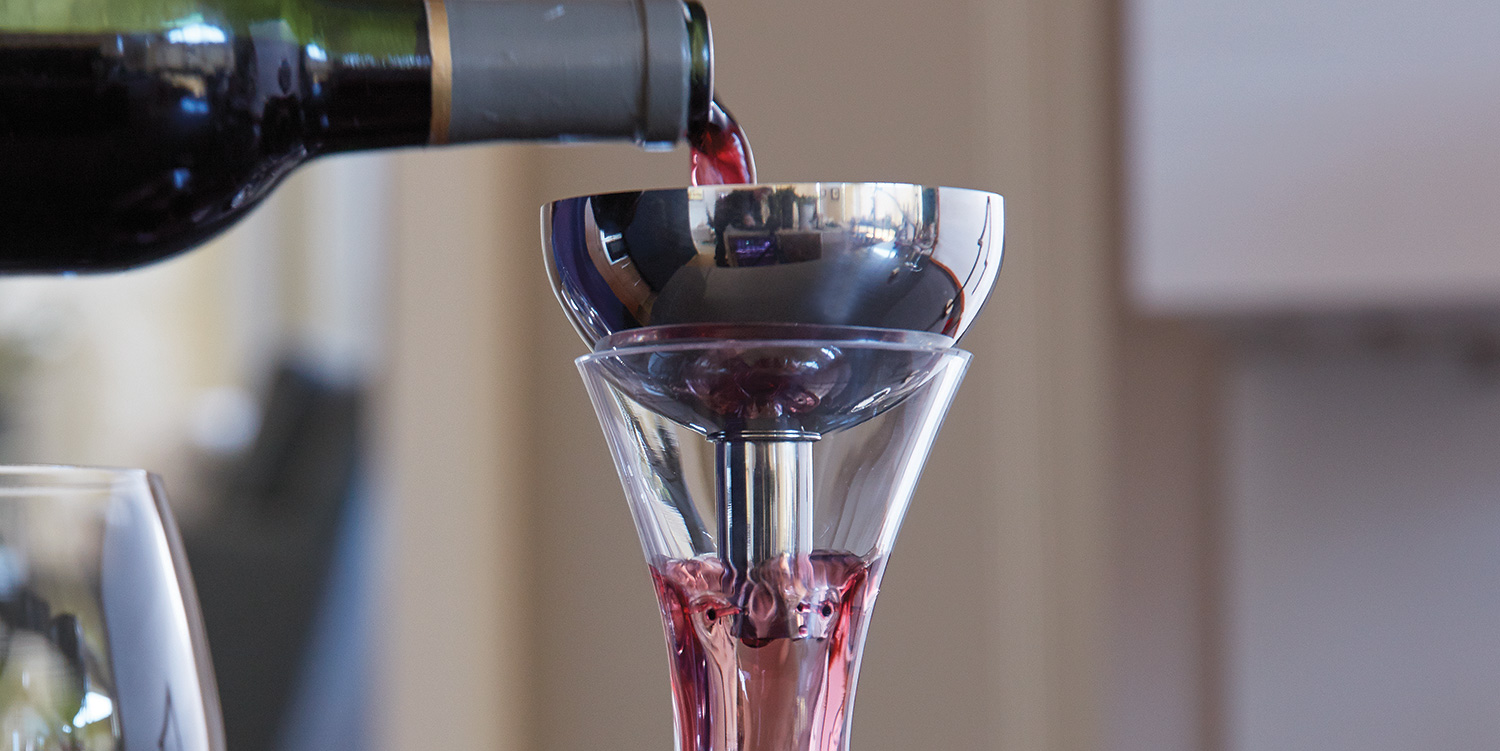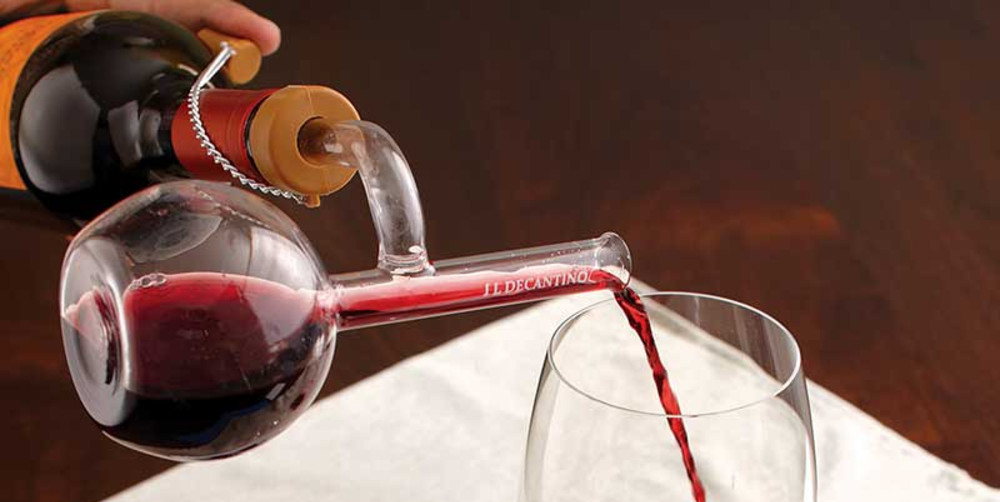
Once wine is in the bottle or in your glass, extensive exposure to air can eventually “oxidize” the wine, resulting in a poor tasting experience. If air is so bad for wine, why should it be aerated? Before winemakers mastered the art of clarification, decanting was necessary for all wines to separate the wine from sediment. Today, this is still recommended for older, high-quality wines that are expected to throw off sediment as part of the ageing process.
Decanting focuses on the separation of sediment from the wine, aeration allows wine to breathe, softening tannins and instantly improving drinkability.
Aeration is beneficial for young, bold and tannic styles, such as Barolo, Zinfandel, Shiraz, Petite Sirah and new world Cabernet Sauvignon. These wines can be highly concentrated and tannic early in their lives to the level that any “loss” of initial sensory impressions by aerating is a good thing!
If you don’t have the time or need the pomp and circumstance of a crystal decanter and are looking for something that is quick and easy to use, here are few options to consider:
Stainless Steel Funnel
The Sommelier-quality set is made from stainless steel and includes a mesh filter to trap sediment and pieces of cork from old bottles, while the funnel gently aerates young wines to soften tight edges and open their flavor and bouquet.
IL Decantino System
Easy to use and fun to watch the wine pour through, it is a mini decanting system of non-leaded glass.
Vinturi Wine Aerator
Two holes in the sides allow air to enter the funnel as wine is poured through it and down the sides of the plastic funnel tip before entering the glass. Its mesh screen catches excess sediment, leaving your wine fresh in flavor and bouquet.


